
This story originally appeared on Stacker and was produced and distributed in partnership with Stacker Studio.
States that will need nurses the most by 2030
Nursing is facing a perfect storm of factors, that, when taken all together, may leave the world short of almost 5.7 million nurses by 2030, according to forecasts by Becker's Hospital Review. In America, the driving factors behind this shortage include the baby boomer generation reaching retirement age, an increased need for health care as our population gets older, a lack of qualified educators, and the COVID-19 pandemic. While every state is feeling the effects of these factors, their intensity, and the amount to which they’ll affect nursing supply, varies immensely.
NursingEducation.org used data from the Health Resources and Services Administration's Health Workforce Simulation Model, which is an integrated health professions projection model that estimates the current and future supply of and demand for health care providers. The 2017 model, which is the most recent available, looks at demographics of current health care providers, current and projected population numbers, and the state of the national economy and the labor market.
For this story, the states were ranked by the projected surplus of registered nurses in 2030, which is the percent change between the projected supply of RNs and the projected demand. A positive percentage means there is a projected surplus of nurses in 2030, and a negative percentage means there is a projected shortage of nurses. Any ties are broken by the projected surplus of licensed practical nurses in 2030.
Read on to see where your state falls in the rankings, and what states are doing to help amend the crisis, whether it’s improving the student-to-professional pipeline or providing monetary incentives.
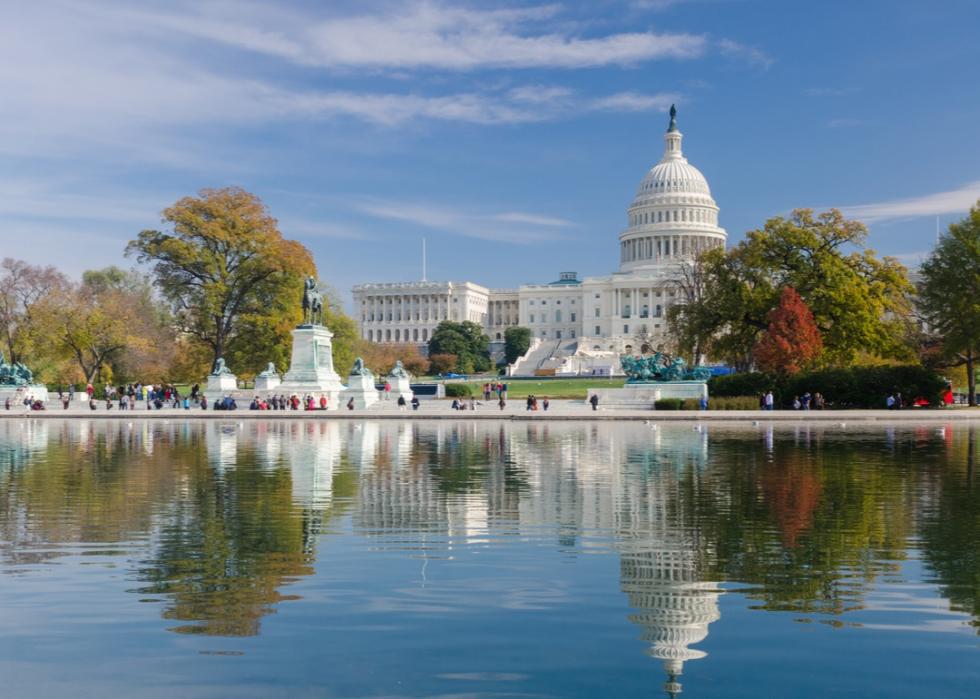
#51. Washington D.C.
- Projected surplus of registered nurses in 2030: 282.6%
--- 2030 projected demand for registered nurses: 2,300
--- 2030 projected supply of registered nurses: 8,800
- Projected surplus of licensed practical nurses in 2030: 38.5%
--- 2030 projected demand for licensed practical nurses: 1,300
--- 2030 projected supply of licensed practical nurses: 1,800
Washington D.C. is one of the few places that will experience a surplus of both registered nurses and licensed practical nurses over the next decade, thanks in large part to its relatively small population. Still, the capital offers a loan repayment program, covering up to $83,500 for registered nurses, which works to ensure the states won't lure away all of their best candidates.

#50. Wyoming
- Projected surplus of registered nurses in 2030: 50.9%
--- 2030 projected demand for registered nurses: 5,500
--- 2030 projected supply of registered nurses: 8,300
- Projected surplus of licensed practical nurses in 2030: 12.5%
--- 2030 projected demand for licensed practical nurses: 1,600
--- 2030 projected supply of licensed practical nurses: 1,800
Wyoming is one of the country’s more rural states with very little in the way of major metropolitan areas. As a result, it can be difficult for nurses and other healthcare professionals, especially those who are new to the state, to identify hospitals and medical centers in need of employees. The Wyoming Health Resources Network, an organization that works free of charge to match professionals with offices in need, is a useful resource for licensed RNs and LPNs looking to fill the nursing gap.

#49. New Mexico
- Projected surplus of registered nurses in 2030: 44.9%
--- 2030 projected demand for registered nurses: 21,600
--- 2030 projected supply of registered nurses: 31,300
- Projected surplus of licensed practical nurses in 2030: 0.0%
--- 2030 projected demand for licensed practical nurses: 4,900
--- 2030 projected supply of licensed practical nurses: 4,900
In November 2020 during the COVID-19 pandemic, New Mexico found itself short some 6,000 nurses and counting, as professionals fell ill or left the field. As a result, the University of New Mexico pledged $30 million for the construction of a new College of Nursing building that will be designed to attract more students and allow them to obtain a top-of-the-line education. Post-graduation, New Mexico Health Resources, Inc., an organization founded in 1981, will help connect these newly minted nurses to the organizations that need them most.

#48. Ohio
- Projected surplus of registered nurses in 2030: 37.0%
--- 2030 projected demand for registered nurses: 132,800
--- 2030 projected supply of registered nurses: 181,900
- Projected surplus of licensed practical nurses in 2030: 8.1%
--- 2030 projected demand for licensed practical nurses: 50,800
--- 2030 projected supply of licensed practical nurses: 54,900
Some good news came out of the state of Ohio earlier this month when it was announced that nursing schools were experiencing record rates of application as a result of the pandemic. While this by no means ensures that potential shortages will be covered, if enrollment and graduation rates remain high, these deficits may not be as severe. Current and future licensed nurses in the state can find support and resources through the Ohio Nurses Association, which was founded in 1904.
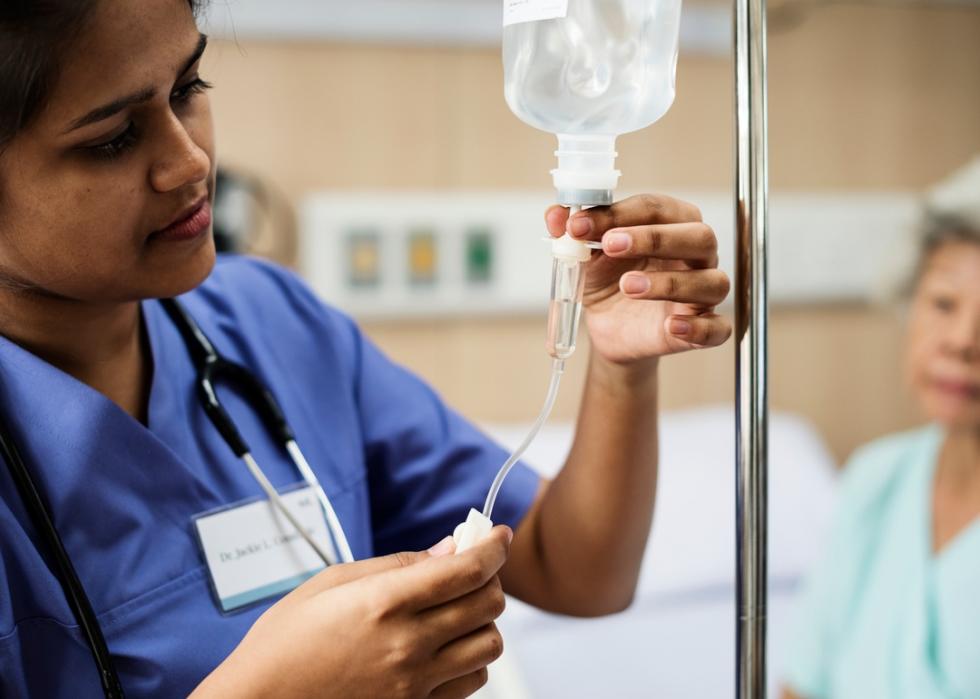
#47. Vermont
- Projected surplus of registered nurses in 2030: 36.8%
--- 2030 projected demand for registered nurses: 6,800
--- 2030 projected supply of registered nurses: 9,300
- Projected surplus of licensed practical nurses in 2030: 4.2%
--- 2030 projected demand for licensed practical nurses: 2,400
--- 2030 projected supply of licensed practical nurses: 2,500
Nursing graduates (RNs, LPNs, or nurse practitioners) who are struggling to pay off their student debt or handle their loans may want to consider moving to Vermont. The state offers several repayment and assistance programs that make handling debt easier. There are also more nurses per capita here than in other states on average, which means those looking to build a community of peers will have a much easier go of it than nurses in Wyoming, for example.
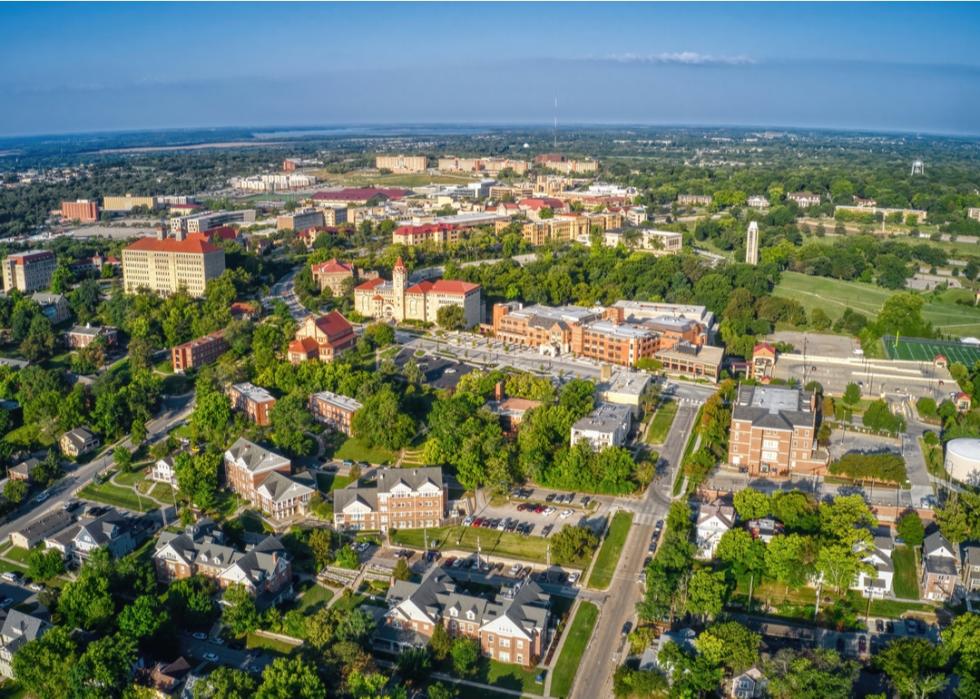
#46. Kansas
- Projected surplus of registered nurses in 2030: 36.1%
--- 2030 projected demand for registered nurses: 34,900
--- 2030 projected supply of registered nurses: 47,500
- Projected surplus of licensed practical nurses in 2030: 26.3%
--- 2030 projected demand for licensed practical nurses: 11,400
--- 2030 projected supply of licensed practical nurses: 14,400
Anxieties about potential nursing shortages in Kansas have led to legislation that allocates $1.8 million in state funding for nursing program development in the state’s public and private universities. Since the bill was enacted in 2006, program quality has increased, NCLEX scores have gone up, and pass rates have improved. For this reason, students considering enrolling in undergraduate or graduate-level nursing programs would do well to consider a school in the Midwestern state.
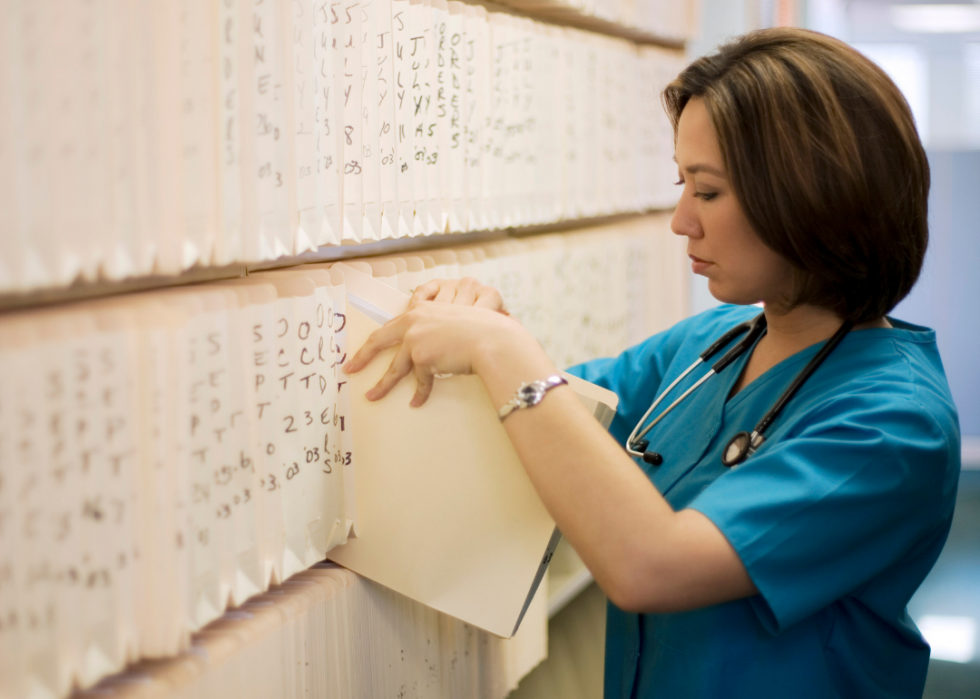
#45. Nevada
- Projected surplus of registered nurses in 2030: 31.4%
--- 2030 projected demand for registered nurses: 25,800
--- 2030 projected supply of registered nurses: 33,900
- Projected shortage of licensed practical nurses in 2030: 19.2%
--- 2030 projected demand for licensed practical nurses: 5,200
--- 2030 projected supply of licensed practical nurses: 4,200
Ranking 49th in the nation for the number of nurses per capita, Nevada must act fast if they hope to obtain a sufficient number of nurses for their growing and aging population. A proposed Assembly Bill, 142, aims to do just that. If passed, the bill would add Nevada to the nursing licensure compact, a group of states that will honor each other’s nursing licenses and allow nurses to move around and work without obtaining new paperwork each time.
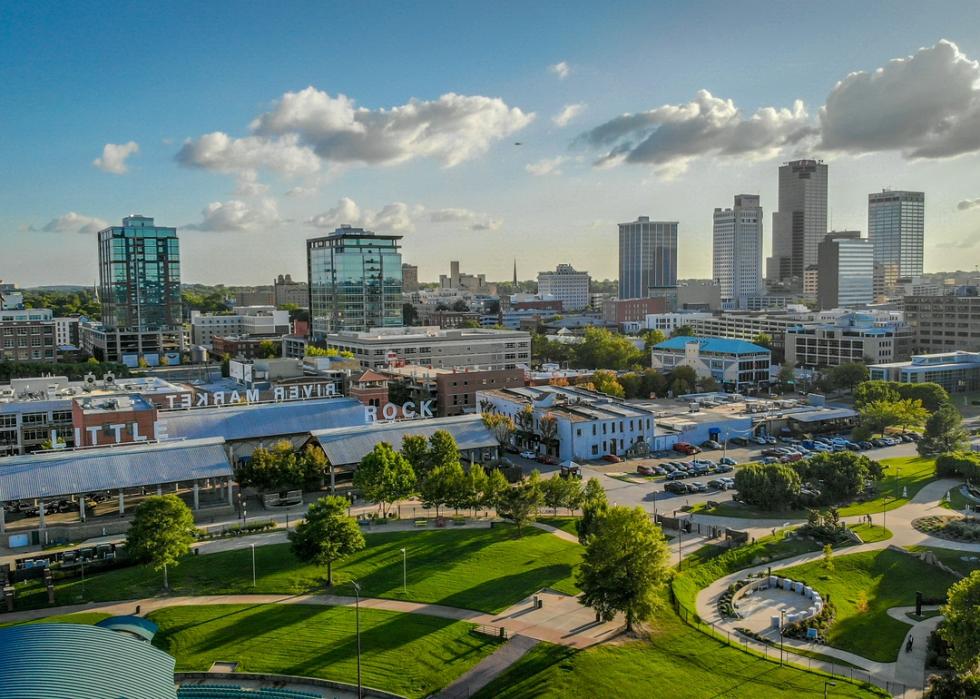
#44. Arkansas
- Projected surplus of registered nurses in 2030: 30.3%
--- 2030 projected demand for registered nurses: 32,300
--- 2030 projected supply of registered nurses: 42,100
- Projected surplus of licensed practical nurses in 2030: 14.1%
--- 2030 projected demand for licensed practical nurses: 15,600
--- 2030 projected supply of licensed practical nurses: 17,800
With one of the lowest pay rates in the nation, Arkansas will be forced to get creative if it hopes to attract and keep the thousands of new nurses they’ll need in the future. One hospital, Saline Memorial, is certainly trying: It launched a mentorship program for new nurses in the midst of the pandemic. The program was designed to help new graduates find their footing so they’d stay with the profession even while being completely overwhelmed by the pandemic. The program’s success appears to indicate that other hospitals in the state may set up similar initiatives.
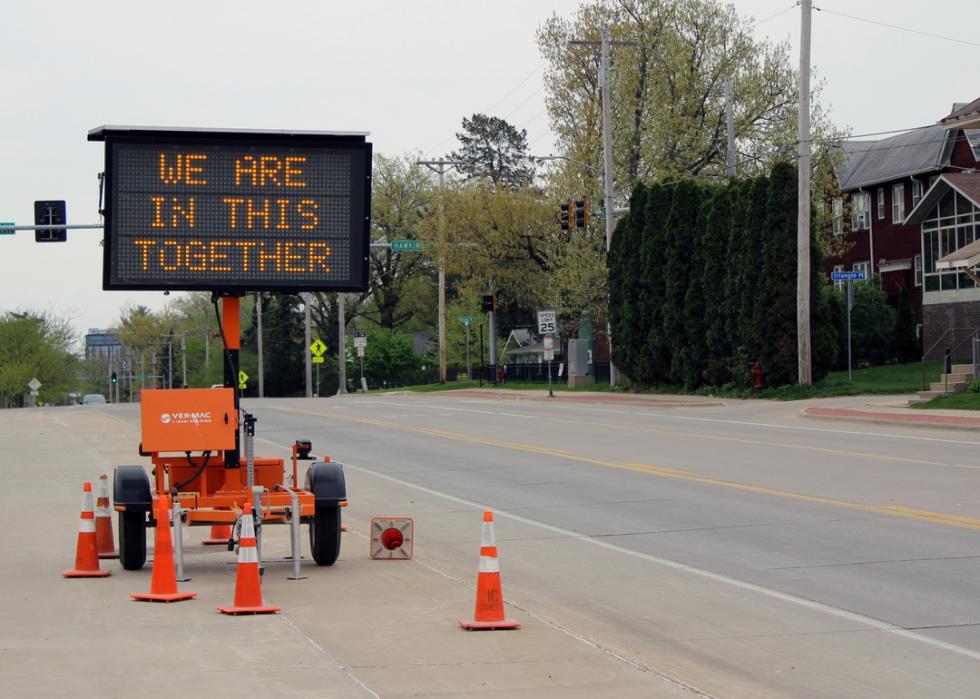
#43. Iowa
- Projected surplus of registered nurses in 2030: 28.6%
--- 2030 projected demand for registered nurses: 35,300
--- 2030 projected supply of registered nurses: 45,400
- Projected surplus of licensed practical nurses in 2030: 31.3%
--- 2030 projected demand for licensed practical nurses: 9,900
--- 2030 projected supply of licensed practical nurses: 13,000
Nursing residency programs are one of the fastest ways to get new nurses up to speed, but not every hospital in Iowa offers one. The Nurse Residency Task Force of the Iowa Action Coalition has put together an online residency program that will help new hires develop the strategies and confidence they need to provide high-quality care. Offering this type of support to new graduates could increase retention rates and could put a major dent in potential shortages.
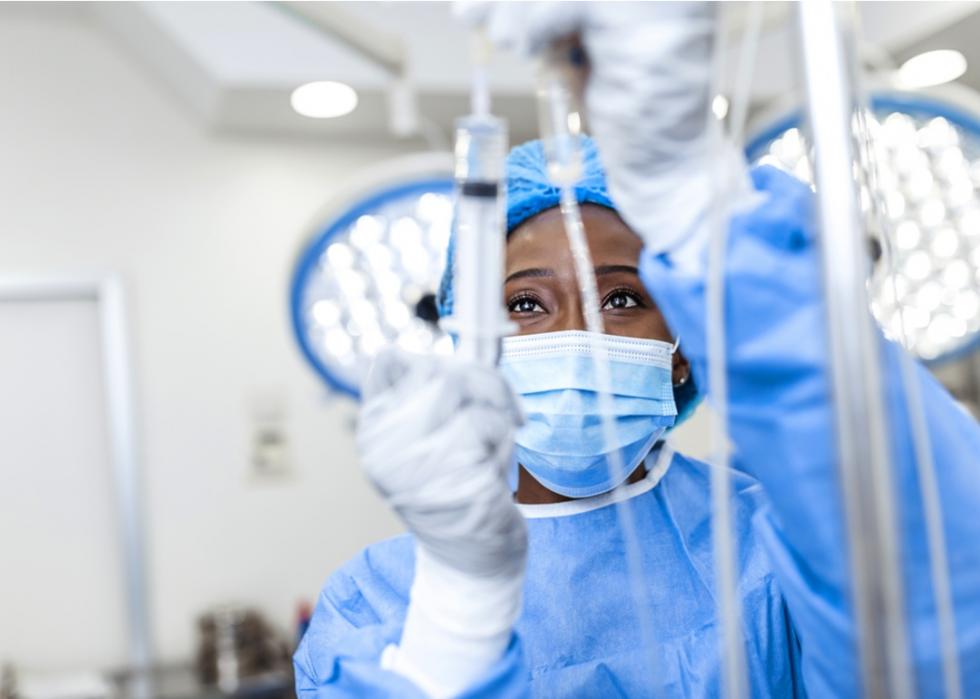
#42. Maine
- Projected surplus of registered nurses in 2030: 28.5%
--- 2030 projected demand for registered nurses: 16,500
--- 2030 projected supply of registered nurses: 21,200
- Projected surplus of licensed practical nurses in 2030: 30.8%
--- 2030 projected demand for licensed practical nurses: 2,600
--- 2030 projected supply of licensed practical nurses: 3,400
A new partnership between the University of Maine at Augusta and the University of Maine at Farmington has created an entirely new nursing program that will help serve the state’s more rural communities. Meanwhile, individual hospitals, like Central Main Healthcare, are providing tuition reimbursement programs, signing bonuses, and regular training to retain their existing nurses who have yet to reach retirement age.
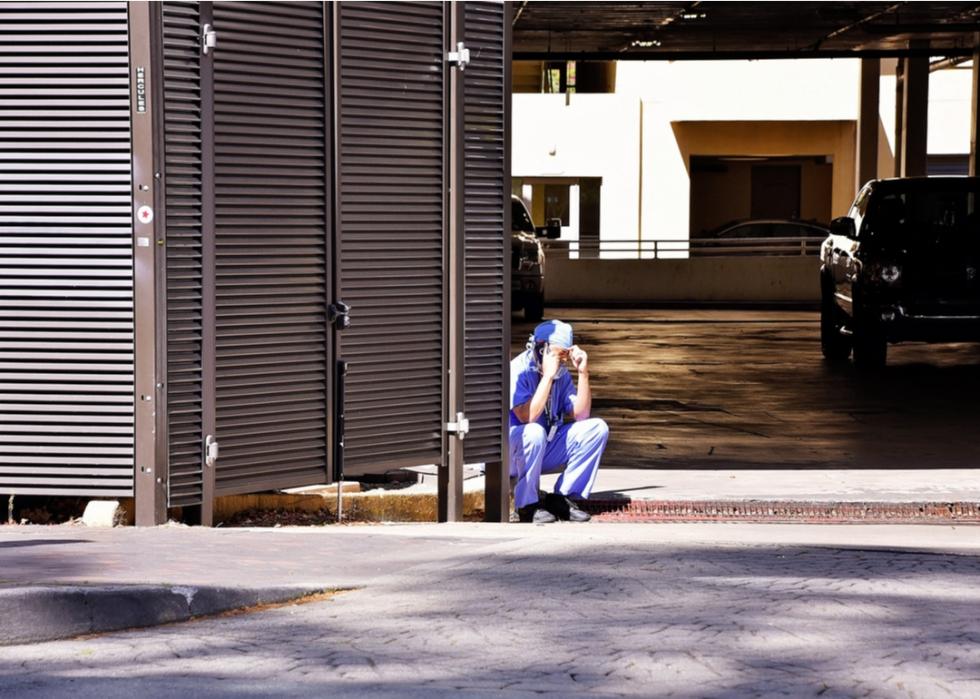
#41. Virginia
- Projected surplus of registered nurses in 2030: 26.2%
--- 2030 projected demand for registered nurses: 86,500
--- 2030 projected supply of registered nurses: 109,200
- Projected shortage of licensed practical nurses in 2030: 12.0%
--- 2030 projected demand for licensed practical nurses: 36,600
--- 2030 projected supply of licensed practical nurses: 32,200
In Virginia, the nursing shortage will be felt the most in rural areas that naturally don’t attract as many folks. In an effort to lure more qualified professionals to these areas, the state offers loan repayment programs (up to $140,000 for a four-year commitment) and scholarship opportunities through the Department of Health for those pledged to work at qualifying hospitals and clinics. Additionally, the Virginia Nurses Association provides support for these individuals, as well as thousands of others who choose to work in more urban settings.

#40. Idaho
- Projected surplus of registered nurses in 2030: 23.5%
--- 2030 projected demand for registered nurses: 15,300
--- 2030 projected supply of registered nurses: 18,900
- Projected surplus of licensed practical nurses in 2030: 4.9%
--- 2030 projected demand for licensed practical nurses: 4,100
--- 2030 projected supply of licensed practical nurses: 4,300
Officials in Idaho are sure that the best way to avoid a nursing shortage in their state is by fostering connections between individuals and the communities where they work. One way the state is building these connections is the Idaho Education Incentive Loan Forgiveness program. The program promises financial assistance to Idaho high school students, who enroll in a state college or university’s nursing program, then pledge to work in the area for at least two years post-graduation.
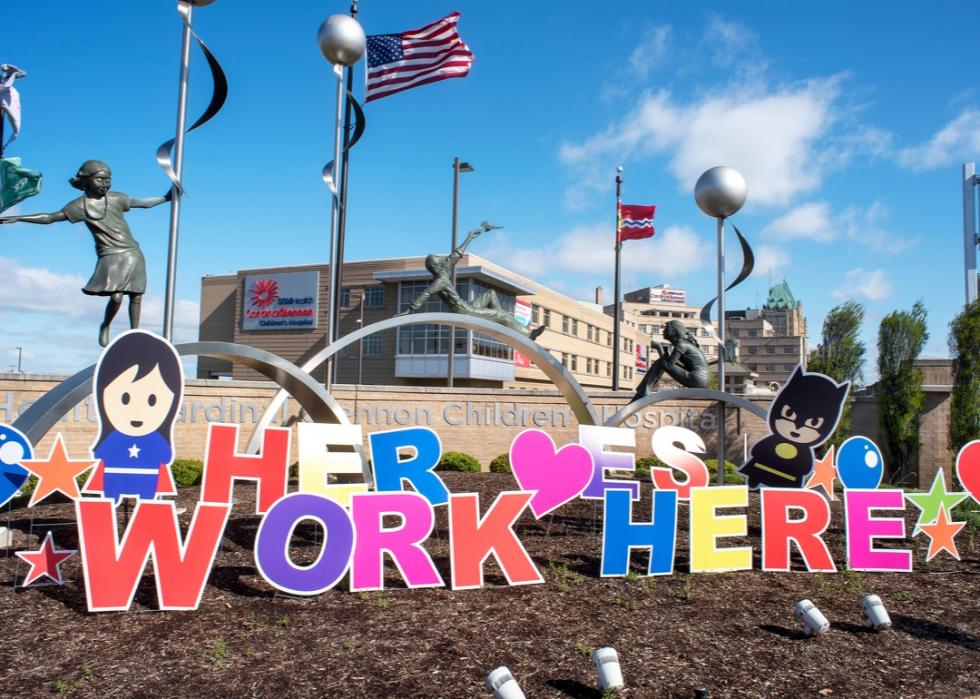
#39. Missouri
- Projected surplus of registered nurses in 2030: 22.8%
--- 2030 projected demand for registered nurses: 73,200
--- 2030 projected supply of registered nurses: 89,900
- Projected shortage of licensed practical nurses in 2030: 17.4%
--- 2030 projected demand for licensed practical nurses: 28,100
--- 2030 projected supply of licensed practical nurses: 23,200
In 2019, Missouri began tackling its nursing shortage problem by implementing the “earn while you learn” model. This program allowed fourth-semester, associate-degree-earning nurses to bring home a wage while finishing out their education. The idea being that the faster students can get a paycheck the more likely they’ll be to begin a program in the first place.
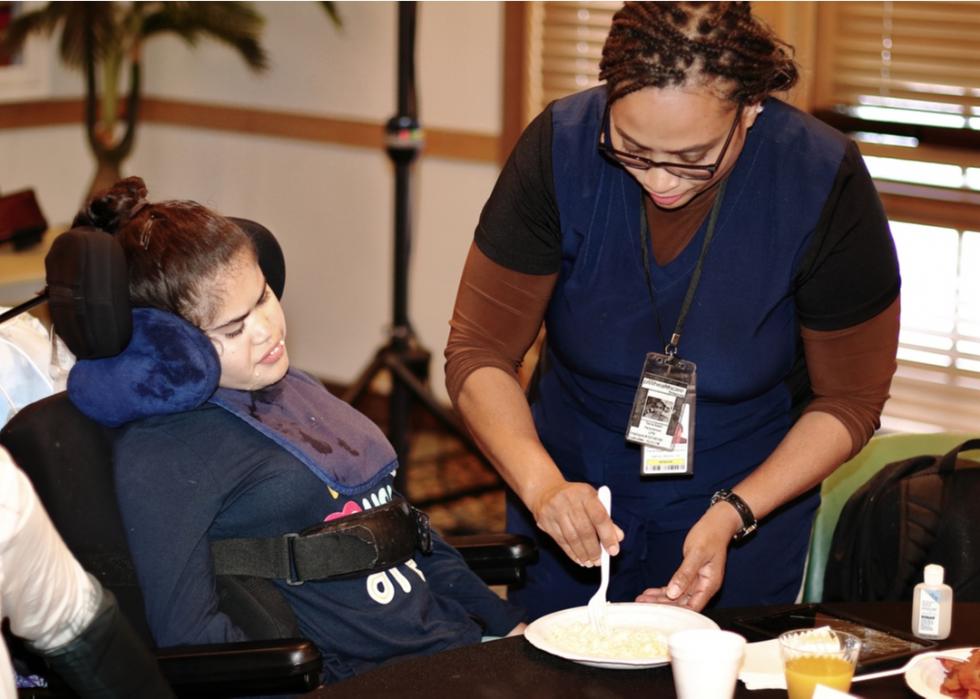
#38. Florida
- Projected surplus of registered nurses in 2030: 22.4%
--- 2030 projected demand for registered nurses: 240,000
--- 2030 projected supply of registered nurses: 293,700
- Projected shortage of licensed practical nurses in 2030: 12.3%
--- 2030 projected demand for licensed practical nurses: 83,900
--- 2030 projected supply of licensed practical nurses: 73,600
One of the states hit hardest by the COVID-19 pandemic, Florida has also experienced one of the highest rates of nurse loss in the country as health care professionals have fled due to unsafe conditions and burnout. While the last year has only amplified the already-dire situation, some schools, like Premier Nursing Academy, are working hard to offset the losses. In December 2020, the school announced the launching of a free, state-approved program that would train CNAs in just four weeks.

#37. West Virginia
- Projected surplus of registered nurses in 2030: 21.2%
--- 2030 projected demand for registered nurses: 20,800
--- 2030 projected supply of registered nurses: 25,200
- Projected surplus of licensed practical nurses in 2030: 11.2%
--- 2030 projected demand for licensed practical nurses: 9,800
--- 2030 projected supply of licensed practical nurses: 10,900
West Virginia’s prescription for the nursing shortage is two-fold. First, the state has launched the West Virginia Invests grant, which covers the costs of an associate’s degree in nursing for residents who pass a drug test and agree to work in the area for two years. Second, they are relying on local hospitals to provide things like scholarships, loan forgiveness, signing bonuses, and retention bonuses to incentivize nurses to stay in the field and in the state.
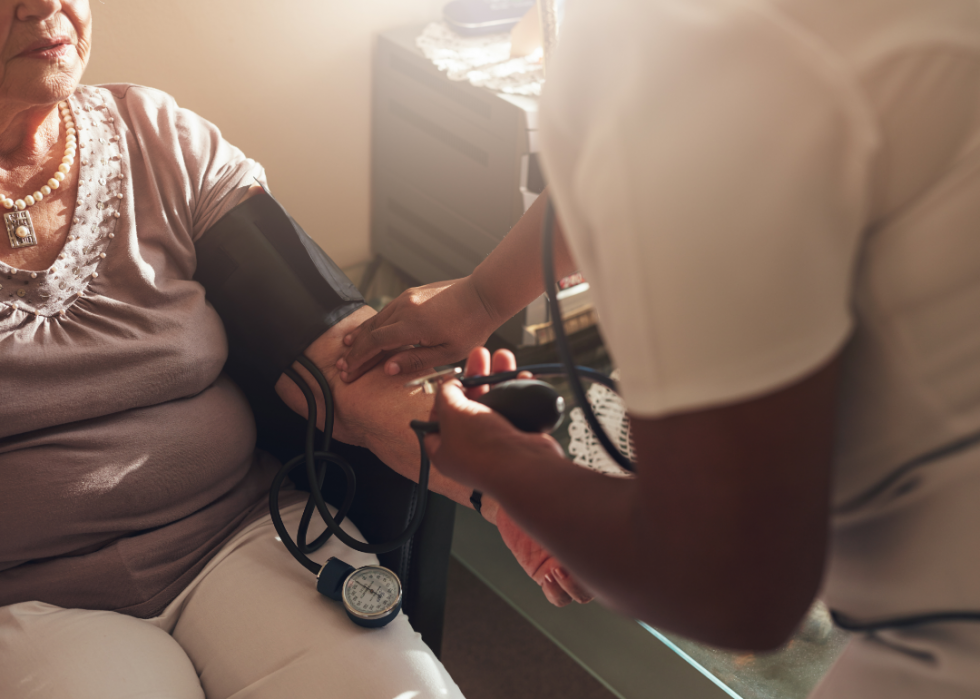
#36. Mississippi
- Projected surplus of registered nurses in 2030: 20.4%
--- 2030 projected demand for registered nurses: 35,300
--- 2030 projected supply of registered nurses: 42,500
- Projected shortage of licensed practical nurses in 2030: 16.9%
--- 2030 projected demand for licensed practical nurses: 14,200
--- 2030 projected supply of licensed practical nurses: 11,800
An initiative in Mississippi called “Saving Nurses Saves Lives” has been in place for years, working to encourage nurses to go into academia so that the pipeline issue in the state could be fixed. Solutions the initiative has provided include accelerated higher degree programs, an increased number of scholarships, and wage increases. Additionally, the Mississippi Nurses Foundation works to provide monetary support, through scholarships, grants, and stipends to current and future nurses.

#35. Hawaii
- Projected surplus of registered nurses in 2030: 20.0%
--- 2030 projected demand for registered nurses: 16,500
--- 2030 projected supply of registered nurses: 19,800
- Projected surplus of licensed practical nurses in 2030: 9.3%
--- 2030 projected demand for licensed practical nurses: 4,300
--- 2030 projected supply of licensed practical nurses: 4,700
In 2018, Hawaii was recognized as one of the worst states in the country for nurse burnout by Medicare Health Plans. While the pandemic certainly hasn’t helped the situation, the island state has taken measures to attract more nurses to ease the burden. Public and private agencies have been working to attract out-of-state nurses with stipends, bonuses, and subsidized housing, hoping the benefits will outweigh any potential costs.
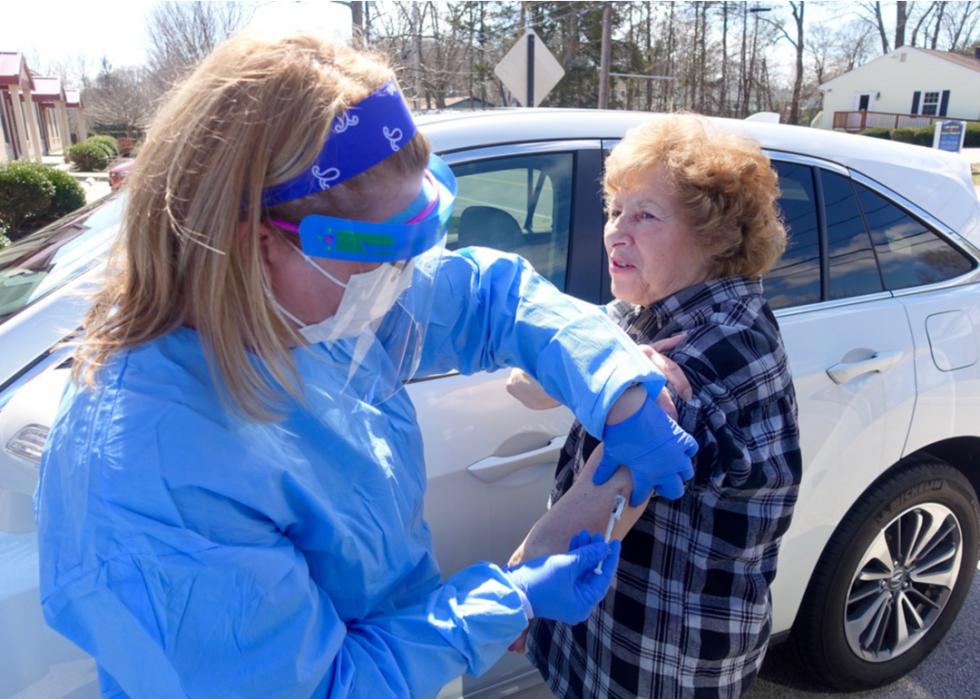
#34. Rhode Island
- Projected surplus of registered nurses in 2030: 20.0%
--- 2030 projected demand for registered nurses: 12,500
--- 2030 projected supply of registered nurses: 15,000
- Projected shortage of licensed practical nurses in 2030: 4.2%
--- 2030 projected demand for licensed practical nurses: 2,400
--- 2030 projected supply of licensed practical nurses: 2,300
Even the smallest state in the nation can’t escape the impending nursing shortage. In an attempt to staunch the flow of those leaving the profession, the Department of Health offers a loan repayment program for nurses and health professionals who choose to work in public or private nonprofit hospitals and clinics.

#33. Kentucky
- Projected surplus of registered nurses in 2030: 19.6%
--- 2030 projected demand for registered nurses: 53,700
--- 2030 projected supply of registered nurses: 64,200
- Projected shortage of licensed practical nurses in 2030: 16.3%
--- 2030 projected demand for licensed practical nurses: 17,200
--- 2030 projected supply of licensed practical nurses: 14,400
In early 2020, Kentucky’s governor, Andy Beshear, awarded a $500,000 grant to a program that would introduce teens in rural communities to the realities of nursing. The program, which seeks to better prepare students for the field, is predicted to push some 480 students into nursing. This program, which will help cover the predicted shortage and boost the local economy, is just one of several of its type in the state.
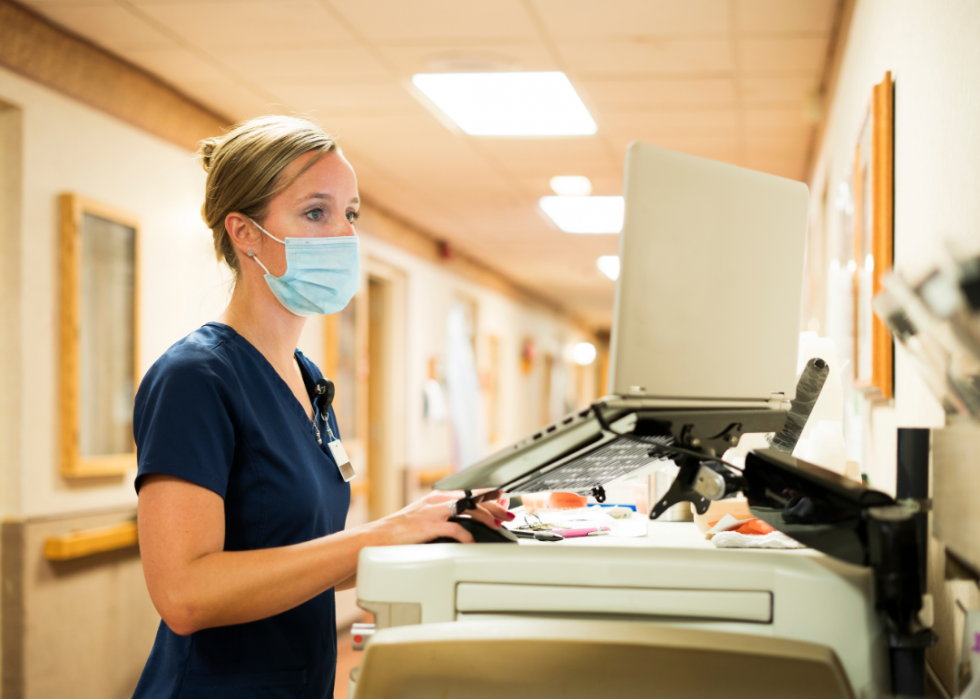
#32. Indiana
- Projected surplus of registered nurses in 2030: 18.6%
--- 2030 projected demand for registered nurses: 75,300
--- 2030 projected supply of registered nurses: 89,300
- Projected shortage of licensed practical nurses in 2030: 26.0%
--- 2030 projected demand for licensed practical nurses: 26,900
--- 2030 projected supply of licensed practical nurses: 19,900
Indiana is taking an innovative approach in solving the nursing crisis: nursing pools. These units work in a similar way to substitute teachers, in that nurses apply to any hospital where there’s a need, but can work in different units or locations as often as necessary. This differs from traditional nursing, where a nurse works in one department or on a single floor throughout the duration of their contract.

#31. Nebraska
- Projected surplus of registered nurses in 2030: 16.5%
--- 2030 projected demand for registered nurses: 21,200
--- 2030 projected supply of registered nurses: 24,700
- Projected shortage of licensed practical nurses in 2030: 7.7%
--- 2030 projected demand for licensed practical nurses: 6,500
--- 2030 projected supply of licensed practical nurses: 6,000
During the height of the second wave of the pandemic, Nebraska’s Department of Health launched a new website designed to help close the current and future gap in nursing. The website connects CNAs, LPNs, and RNs to both employment and volunteer opportunities at hospitals and clinics in need. One of the challenges many willing nurses face, especially those from out of state, is identifying where jobs are available—this website eliminates that hurdle.
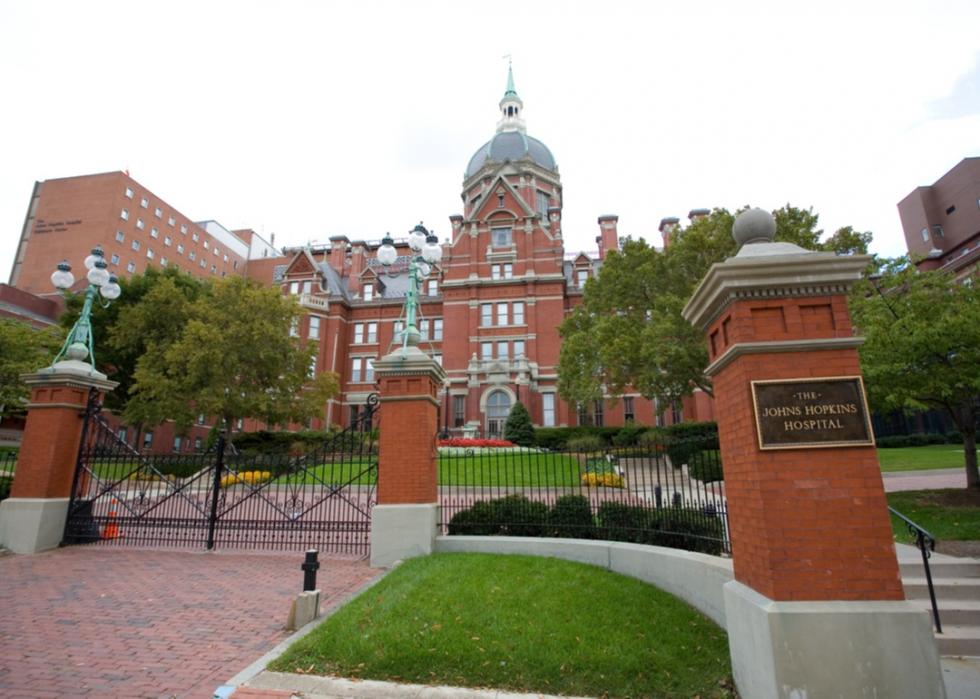
#30. Maryland
- Projected surplus of registered nurses in 2030: 16.4%
--- 2030 projected demand for registered nurses: 73,900
--- 2030 projected supply of registered nurses: 86,000
- Projected shortage of licensed practical nurses in 2030: 42.6%
--- 2030 projected demand for licensed practical nurses: 19,700
--- 2030 projected supply of licensed practical nurses: 11,300
As the United States enters this next stage of the pandemic—vaccine distribution—the need for nurses isn’t dying down. Maryland is tackling its shortage of licensed professionals by allowing nursing students to practice ahead of licensure in areas like administering vaccines, even offering them academic credit in exchange for their participation. Many nursing programs have also let students begin clinicals ahead of schedule or graduate early, which should help with shortages both now and in the long run.
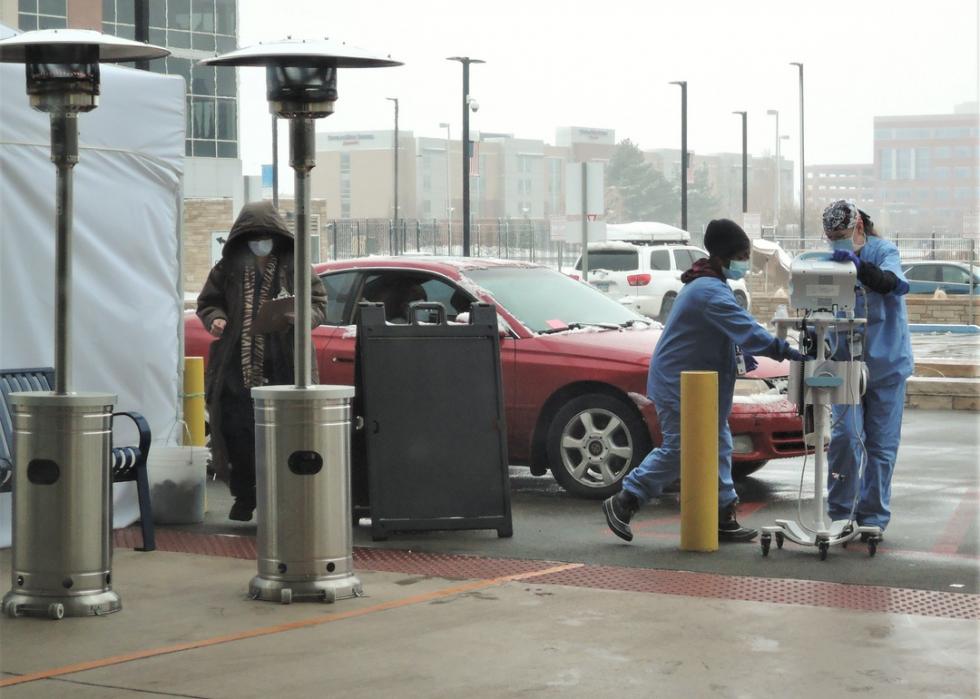
#29. Colorado
- Projected surplus of registered nurses in 2030: 14.7%
--- 2030 projected demand for registered nurses: 63,200
--- 2030 projected supply of registered nurses: 72,500
- Projected shortage of licensed practical nurses in 2030: 16.8%
--- 2030 projected demand for licensed practical nurses: 12,500
--- 2030 projected supply of licensed practical nurses: 10,400
Pipeline issues abound in Colorado as they do in many other states, which is why some schools have begun offering concurrent enrollment programs that allow students to obtain associate's degrees through a community college, while also working on their BSN at a larger university. In a similar vein, many colleges have also begun offering telepresence courses that allow currently accredited faculty to teach at multiple locations of a school at once, circumventing the shortage of faculty in general.
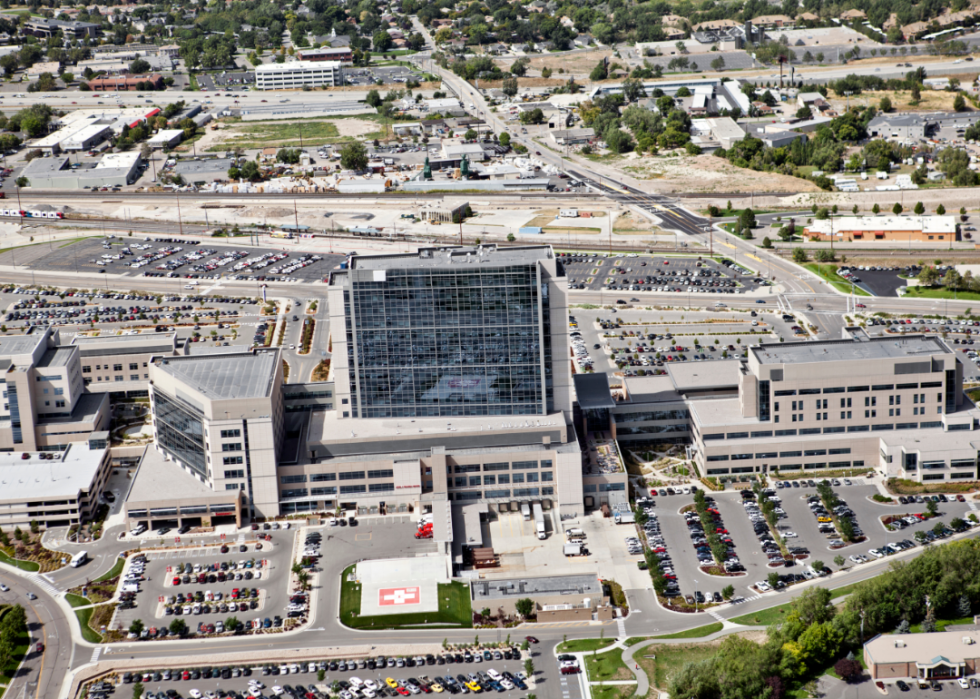
#28. Utah
- Projected surplus of registered nurses in 2030: 13.9%
--- 2030 projected demand for registered nurses: 29,400
--- 2030 projected supply of registered nurses: 33,500
- Projected surplus of licensed practical nurses in 2030: 34.0%
--- 2030 projected demand for licensed practical nurses: 5,000
--- 2030 projected supply of licensed practical nurses: 6,700
Like many other states, Utah created a temporary apprentice license in late 2020 to help move more nurses into overwhelmed hospitals. While there’s currently no word on how long the license will remain in effect, making it permanent could go a long way in easing the burden health care workers will face in the next decade.

#27. North Carolina
- Projected surplus of registered nurses in 2030: 13.9%
--- 2030 projected demand for registered nurses: 118,600
--- 2030 projected supply of registered nurses: 135,100
- Projected shortage of licensed practical nurses in 2030: 30.5%
--- 2030 projected demand for licensed practical nurses: 35,100
--- 2030 projected supply of licensed practical nurses: 24,400
North Carolina is not one of the many states creating new laws and passing bills to help with the nursing crisis. At the start of the year, the North Carolina Board of Nursing changed a rule requiring 80% of a program’s faculty to hold a master’s degree (up from 50%). These upper-level degrees are costly and time-consuming to obtain, meaning that when faced with getting one or leaving the field, many current faculty will likely walk away, forcing programs to turn down potential students.
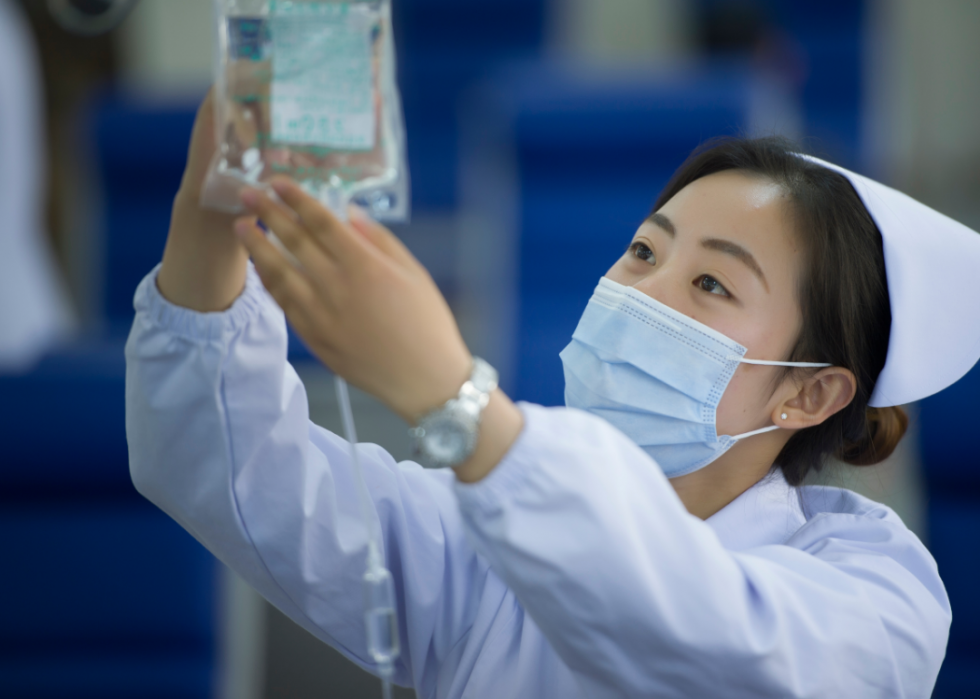
#26. Oklahoma
- Projected surplus of registered nurses in 2030: 13.5%
--- 2030 projected demand for registered nurses: 40,600
--- 2030 projected supply of registered nurses: 46,100
- Projected shortage of licensed practical nurses in 2030: 11.5%
--- 2030 projected demand for licensed practical nurses: 20,800
--- 2030 projected supply of licensed practical nurses: 18,400
Just a few months ago, Oklahoma announced that they’d be making it easier for trained nurses with an inactive license to re-up their certifications. The refresher course now can be partially completed online and finished in half the time it used to take. This move will help bring more nurses to the floor as the pandemic winds down, and may encourage nurses to return to the profession long-term and decrease projected shortages.

#25. Tennessee
- Projected surplus of registered nurses in 2030: 10.2%
--- 2030 projected demand for registered nurses: 82,200
--- 2030 projected supply of registered nurses: 90,600
- Projected shortage of licensed practical nurses in 2030: 21.9%
--- 2030 projected demand for licensed practical nurses: 37,900
--- 2030 projected supply of licensed practical nurses: 29,600
Many states have begun to promote Nursing Corps and loan repayment programs in order to attract more nurses to the field. In Tennessee, for example, nurses can have 85% of their remaining loans paid off in exchange for a two-year commitment at one of the state’s hospitals or mental health institutions. These programs are especially attractive for those who feel the cost of education is a barrier to entering the field.
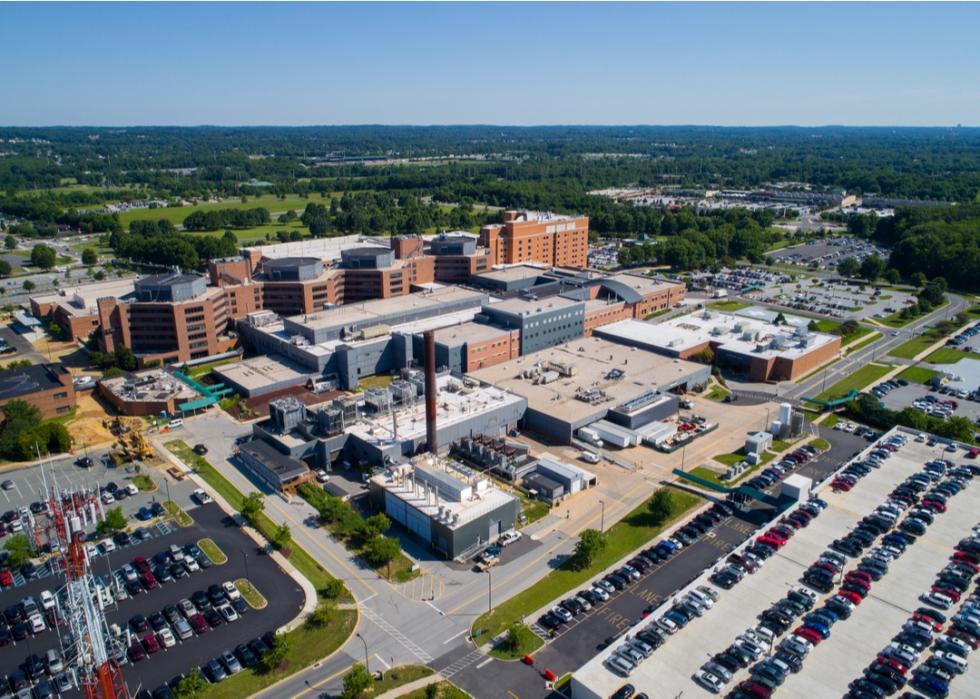
#24. Delaware
- Projected surplus of registered nurses in 2030: 9.4%
--- 2030 projected demand for registered nurses: 12,800
--- 2030 projected supply of registered nurses: 14,000
- Projected shortage of licensed practical nurses in 2030: 6.7%
--- 2030 projected demand for licensed practical nurses: 4,500
--- 2030 projected supply of licensed practical nurses: 4,200
One solution to the nursing crisis that’s currently being discussed in Delaware is an increase in Medicaid reimbursement rates. The state is doing better than most when it comes to having enough nurses to staff its hospitals and weather a pandemic, but when it comes to home nursing—a less often discussed but still vital part of the health care system—the state is struggling. Medicaid reimbursement rates, which inform home nurses hourly rates, haven’t risen since 2006, which means many nurses are choosing to work in hospitals and clinics where the pay is higher.
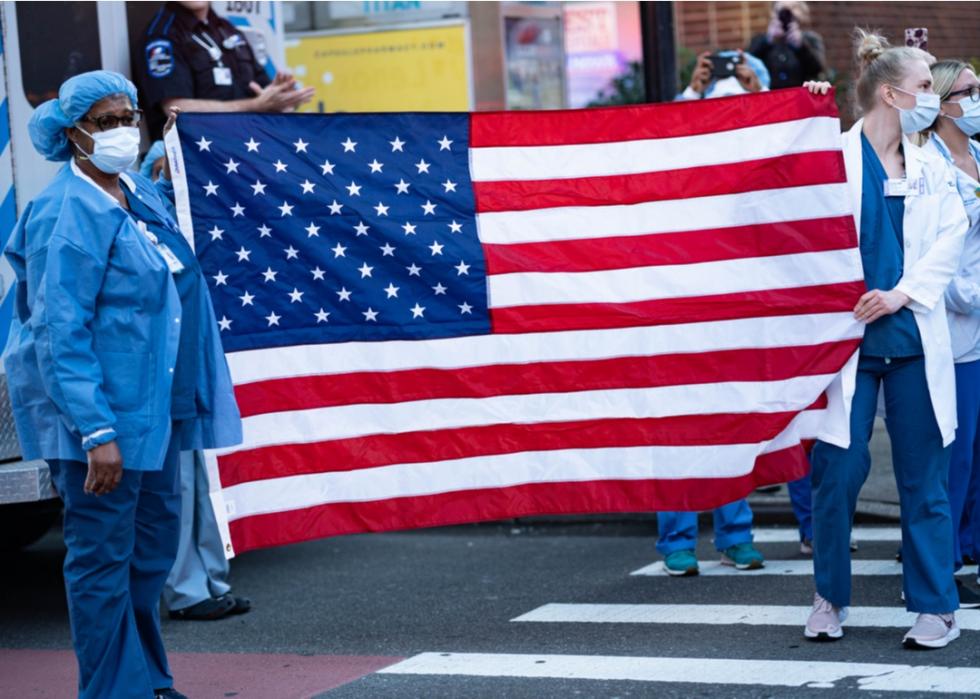
#23. New York
- Projected surplus of registered nurses in 2030: 9.3%
--- 2030 projected demand for registered nurses: 195,200
--- 2030 projected supply of registered nurses: 213,400
- Projected shortage of licensed practical nurses in 2030: 5.8%
--- 2030 projected demand for licensed practical nurses: 62,500
--- 2030 projected supply of licensed practical nurses: 58,900
New York is home to the largest nurses’ union in the country, a coalition of some 42,000 frontline workers. While the state still struggles to get a handle on its projected shortages, which have only worsened during the pandemic, the union offers support for over-stretched and burnt-out professionals. Nursing unions aren’t incredibly common in this country, so the fact that such a massive and powerful body exists may be a draw in and of itself.
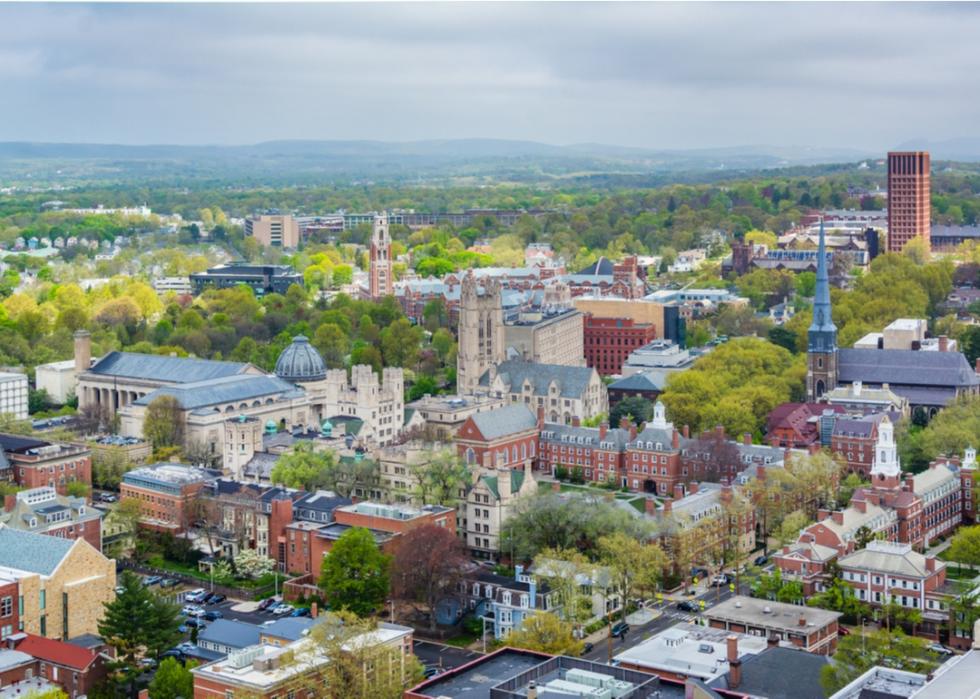
#22. Connecticut
- Projected surplus of registered nurses in 2030: 8.8%
--- 2030 projected demand for registered nurses: 40,000
--- 2030 projected supply of registered nurses: 43,500
- Projected shortage of licensed practical nurses in 2030: 16.7%
--- 2030 projected demand for licensed practical nurses: 13,200
--- 2030 projected supply of licensed practical nurses: 11,000
In Connecticut, the hospitals, rather than the state, have taken on the bulk of the work of attracting and retaining nurses. Through mentoring programs, a promise to promote internally, and residencies, the organizations are doing their best to ensure employees feel equipped and supported to thrive in and stick with their careers.
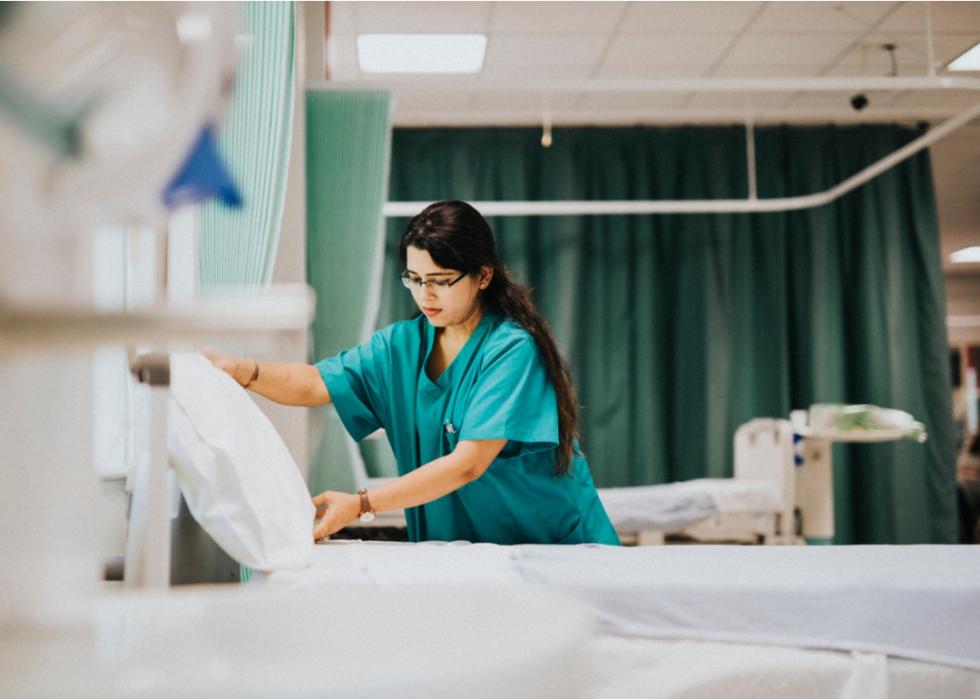
#21. Wisconsin
- Projected surplus of registered nurses in 2030: 8.6%
--- 2030 projected demand for registered nurses: 72,000
--- 2030 projected supply of registered nurses: 78,200
- Projected shortage of licensed practical nurses in 2030: 9.4%
--- 2030 projected demand for licensed practical nurses: 18,000
--- 2030 projected supply of licensed practical nurses: 16,300
The Wisconsin Nurses Association and Administers of Nursing Education of Wisconsin in March 2021 requested $10 million from the state to address the nursing crisis. If their request is granted, the money will be used to forgive the student loans of all nurses who agree to teach for a minimum of three years in one of Wisconsin’s nursing programs. With more teachers in the schools, more nursing students can be accepted, creating more professionals to fill empty floor roles.
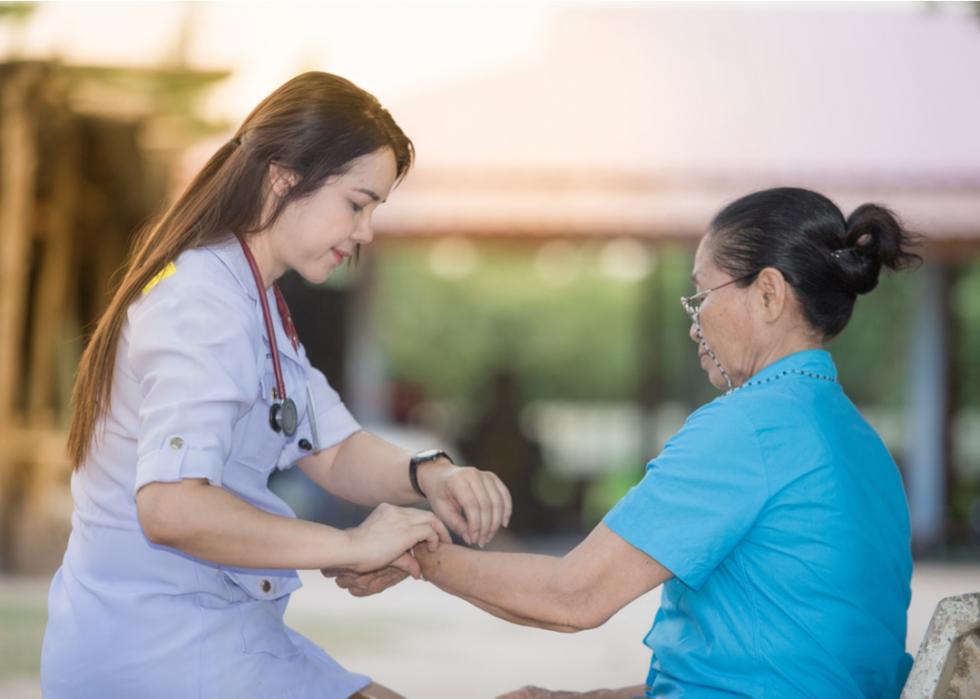
#20. Washington
- Projected surplus of registered nurses in 2030: 7.8%
--- 2030 projected demand for registered nurses: 79,100
--- 2030 projected supply of registered nurses: 85,300
- Projected shortage of licensed practical nurses in 2030: 27.3%
--- 2030 projected demand for licensed practical nurses: 18,700
--- 2030 projected supply of licensed practical nurses: 13,600
Current and future nurses in Washington state have access to the Washington State Nurses Foundation, an organization that works to fund nursing scholarships and support nurses in need. WSNF’s Nurses Emergency Assistance Grants offer $500 to recipients facing financial hardship and are intended to help pay for personal and family expenses.
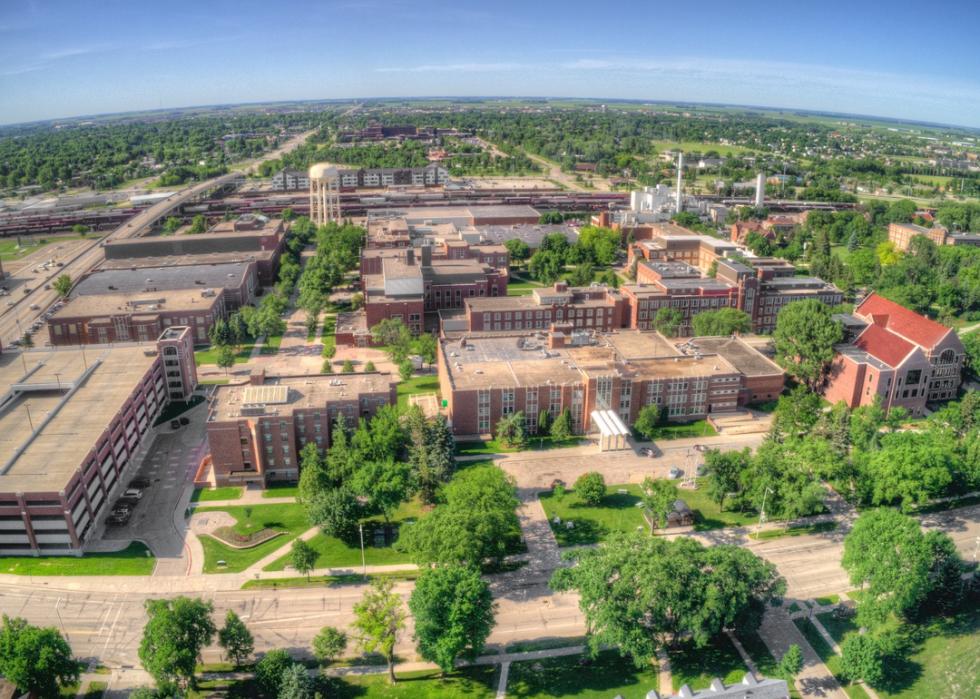
#19. North Dakota
- Projected surplus of registered nurses in 2030: 7.6%
--- 2030 projected demand for registered nurses: 9,200
--- 2030 projected supply of registered nurses: 9,900
- Projected surplus of licensed practical nurses in 2030: 14.7%
--- 2030 projected demand for licensed practical nurses: 3,400
--- 2030 projected supply of licensed practical nurses: 3,900
A little over a year ago, North Dakota launched a program that pays health care facilities if they can attract out-of-state nurses who pledge to work in the state for at least four years. This incentive program means that hospitals and clinics can offer perks, like bonuses and moving, even while salaries may not be able to rival those found in neighboring states. Sen. David Hogue said that the task force who came up with the idea found that the grant “would do more to bring in and retain nurses than spending money on education and scholarships.”

#18. Alabama
- Projected surplus of registered nurses in 2030: 6.6%
--- 2030 projected demand for registered nurses: 79,800
--- 2030 projected supply of registered nurses: 85,100
- Projected shortage of licensed practical nurses in 2030: 31.9%
--- 2030 projected demand for licensed practical nurses: 30,100
--- 2030 projected supply of licensed practical nurses: 20,500
Alabama believes that the answer to its projected shortage is increasing its spending on nursing education. In January 2021, the University of Alabama announced it would be doubling the size of its nursing program and would open a $14 million, 32,000-square-foot building expansion to house them all. This means that they will be able to graduate well over 550 students each year, which can go a long way toward meeting the 10,000 LPN deficit.
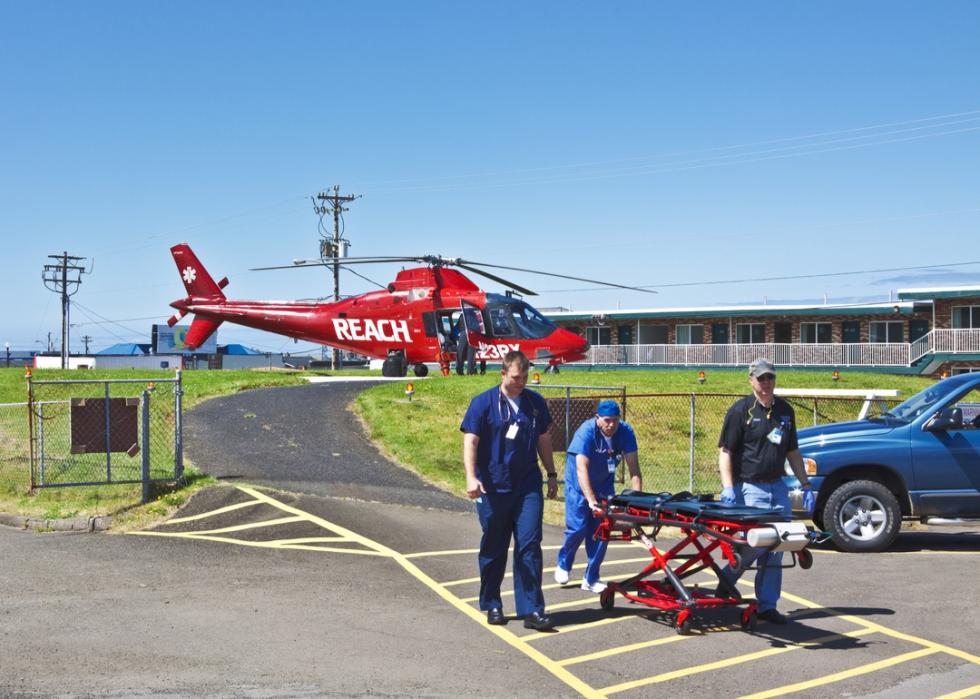
#17. Oregon
- Projected surplus of registered nurses in 2030: 6.5%
--- 2030 projected demand for registered nurses: 38,600
--- 2030 projected supply of registered nurses: 41,100
- Projected surplus of licensed practical nurses in 2030: 6.5%
--- 2030 projected demand for licensed practical nurses: 4,600
--- 2030 projected supply of licensed practical nurses: 4,900
In 2019, Oregon upped its commitment to the Health Care Provider Incentive Fund from $16 million to $17.6 million. The money in this fund is used to motivate health care workers to find employment in rural and medically underserved parts of the state, through loan repayment, loan forgiveness, insurance subsidies, and scholarships. The increase in spending is sure to attract more and better-qualified nurses in the years to come.
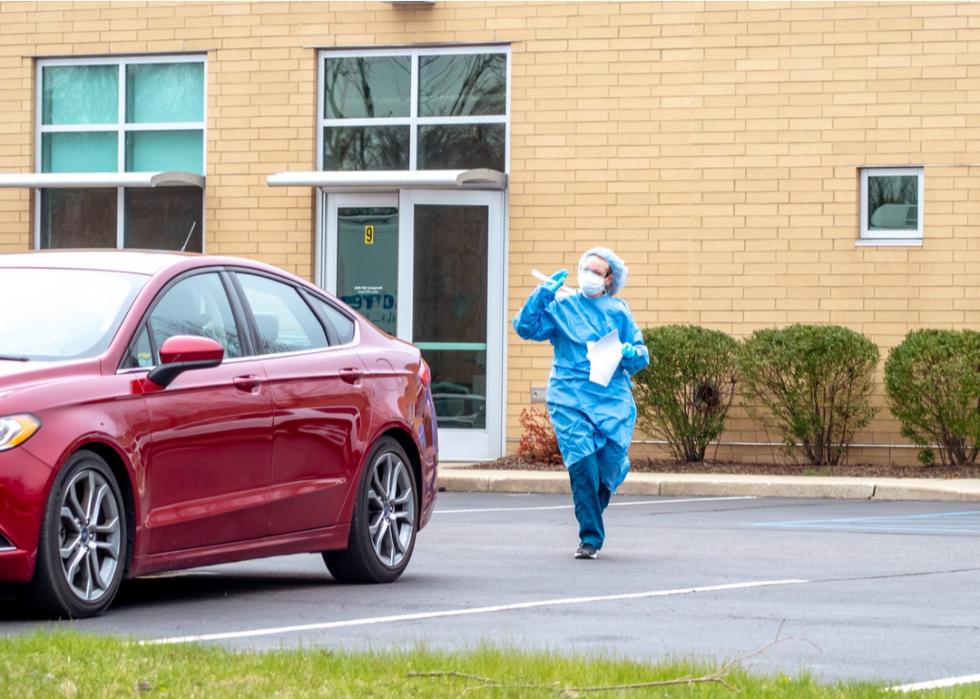
#16. Michigan
- Projected surplus of registered nurses in 2030: 5.8%
--- 2030 projected demand for registered nurses: 104,400
--- 2030 projected supply of registered nurses: 110,500
- Projected shortage of licensed practical nurses in 2030: 11.7%
--- 2030 projected demand for licensed practical nurses: 28,100
--- 2030 projected supply of licensed practical nurses: 24,800
Mid-Michigan is facing the brunt of the nursing shortage crisis, which has inspired local colleges, universities, and employers to band together and find ways to solve the problem. Among their solutions are accelerated bachelor’s degree programs that can be completed in 12 months, new articulation agreements between community colleges and four-year universities, and improved benefit structures in hospitals for nurses who hold four-year degrees. The organizations are hopeful that these new programs will provide a long-term solution to the supply issue.

#15. New Hampshire
- Projected surplus of registered nurses in 2030: 5.4%
--- 2030 projected demand for registered nurses: 20,200
--- 2030 projected supply of registered nurses: 21,300
- Projected shortage of licensed practical nurses in 2030: 37.3%
--- 2030 projected demand for licensed practical nurses: 7,500
--- 2030 projected supply of licensed practical nurses: 4,700
Just a few short weeks ago, the Department of Labor awarded the Dartmouth-Hitchcock Medical Center $2.5 million in funding to help fill holes in the state’s rural health care system. The money will be used for training programs and tuition support, opening doors for folks who want to work in health care but can’t afford the education or would otherwise struggle to begin.
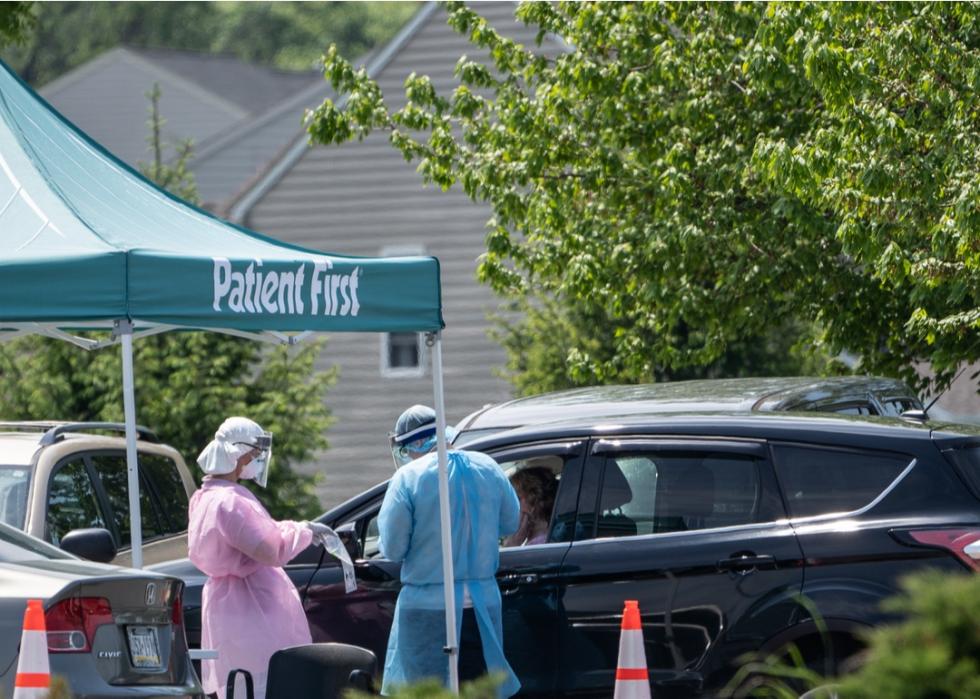
#14. Pennsylvania
- Projected surplus of registered nurses in 2030: 5.1%
--- 2030 projected demand for registered nurses: 160,300
--- 2030 projected supply of registered nurses: 168,500
- Projected shortage of licensed practical nurses in 2030: 27.8%
--- 2030 projected demand for licensed practical nurses: 67,300
--- 2030 projected supply of licensed practical nurses: 48,600
Remedies for the nursing shortage in Pennsylvania are still very much in development, but some organizations have turned to old standbys like signing bonuses, loan forgiveness, and tuition breaks. At least one organization is also suggesting nurses be given more freedom to provide care, working under the full scope of their licenses, which may appeal to nurses who are frustrated by strict parameters.

#13. Louisiana
- Projected surplus of registered nurses in 2030: 4.6%
--- 2030 projected demand for registered nurses: 49,700
--- 2030 projected supply of registered nurses: 52,000
- Projected shortage of licensed practical nurses in 2030: 18.8%
--- 2030 projected demand for licensed practical nurses: 25,500
--- 2030 projected supply of licensed practical nurses: 20,700
In Louisiana, health care providers, like Ochsner Health, are making financial investments in community colleges, pledging upwards of $20 million to ensure they will be supplied with nurses in the years to come. In this instance, the money will be split between the construction of a new building and tuition payments for current and future Ochsner Health employees who wish to undertake further education at the school. Some argue that this kind of partnership allows colleges to accept more students and give them a higher quality education.
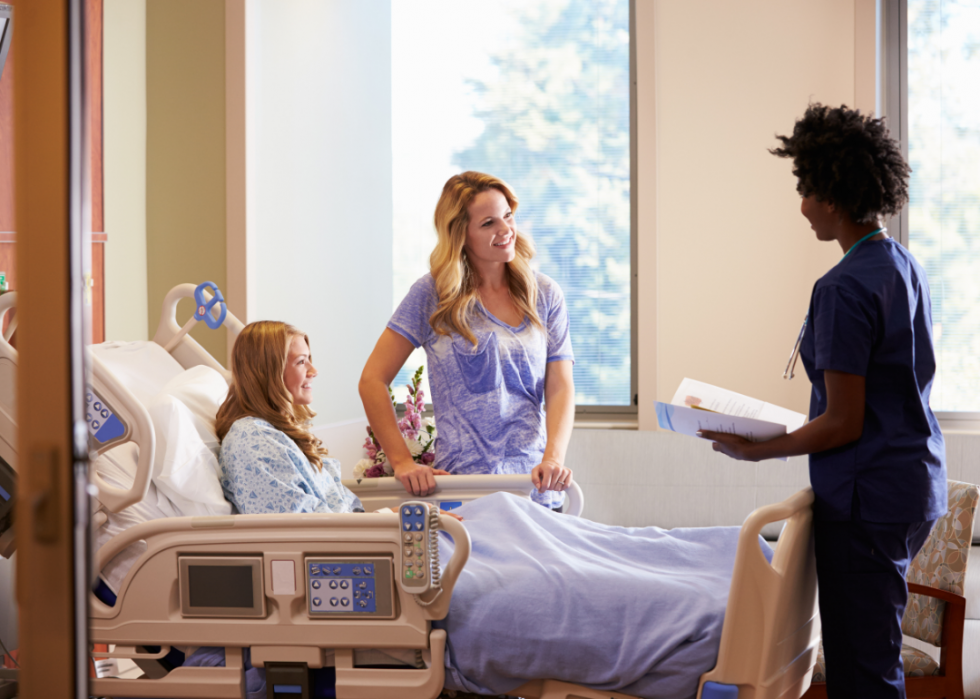
#12. Minnesota
- Projected surplus of registered nurses in 2030: 4.5%
--- 2030 projected demand for registered nurses: 68,700
--- 2030 projected supply of registered nurses: 71,800
- Projected surplus of licensed practical nurses in 2030: 7.4%
--- 2030 projected demand for licensed practical nurses: 23,000
--- 2030 projected supply of licensed practical nurses: 24,700
There are two major nursing organizations in Minnesota, the Minnesota Organization of Registered Nurses and the Minnesota Nurses Association, which provide resources from ongoing education to mentorships to access to current job openings. These membership groups create supportive communities, which can make the difficult job easier and more sustainable.
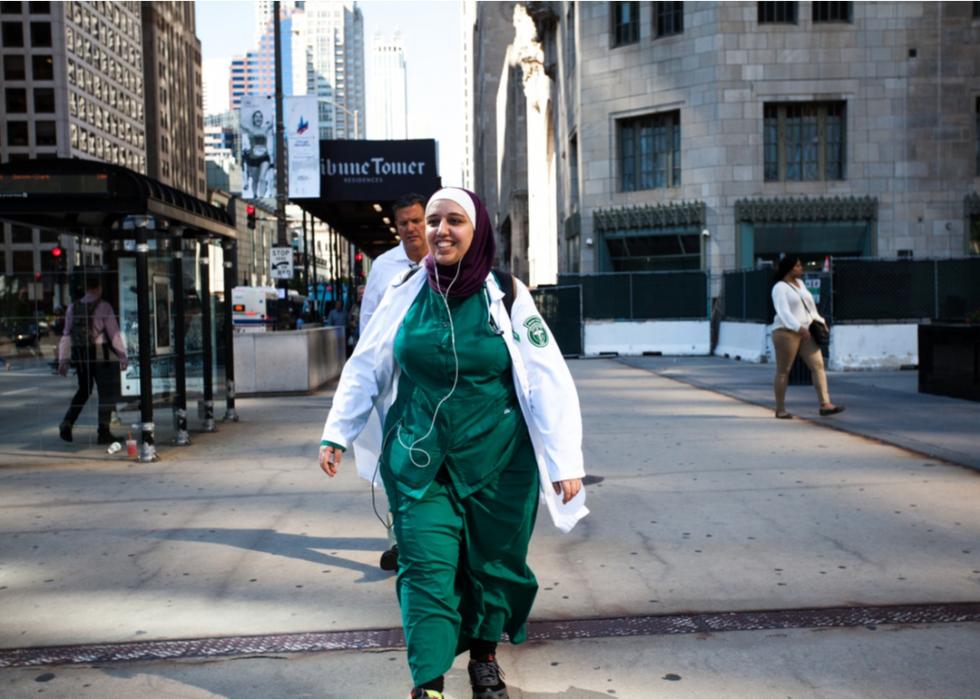
#11. Illinois
- Projected surplus of registered nurses in 2030: 2.6%
--- 2030 projected demand for registered nurses: 139,400
--- 2030 projected supply of registered nurses: 143,000
- Projected shortage of licensed practical nurses in 2030: 7.3%
--- 2030 projected demand for licensed practical nurses: 37,100
--- 2030 projected supply of licensed practical nurses: 34,400
While Nevada is just considering joining the Nurse Licensure Compact, Illinois has already made the leap. In March 2021, the state passed a bill that allows nurses from 34 other states to work in Illinois without having to reapply for licensure. This move is sure to bring in hundreds of new nurses over the next decade, significantly closing the gap between the number of nurses needed and the number available.
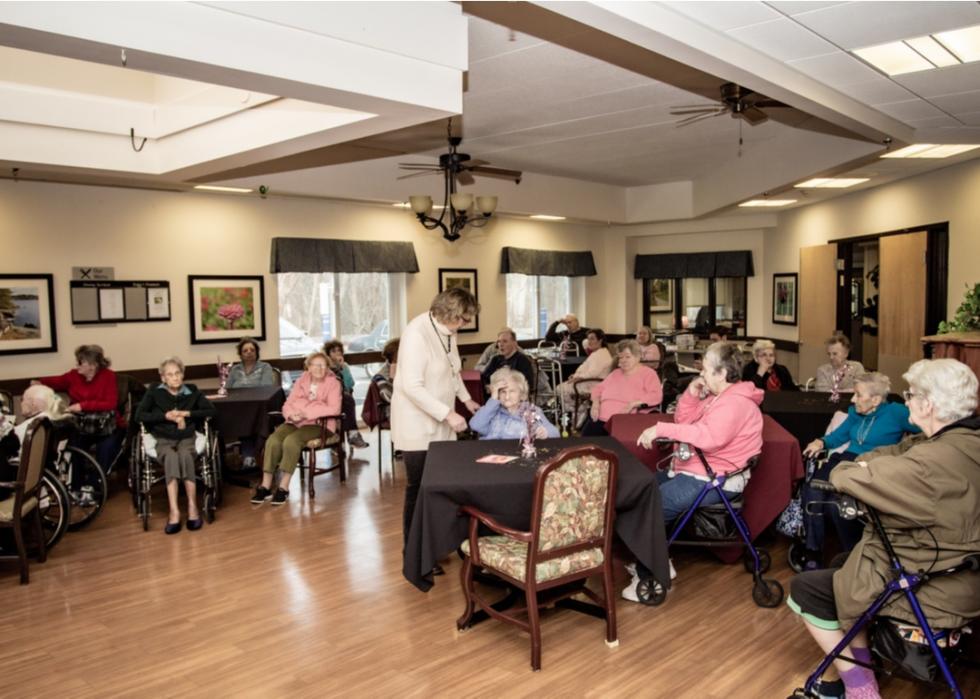
#10. Massachusetts
- Projected surplus of registered nurses in 2030: 2.2%
--- 2030 projected demand for registered nurses: 89,300
--- 2030 projected supply of registered nurses: 91,300
- Projected shortage of licensed practical nurses in 2030: 17.9%
--- 2030 projected demand for licensed practical nurses: 20,100
--- 2030 projected supply of licensed practical nurses: 16,500
Another factor that acts as a deterrent for those considering entering the nursing field is pay. Some states, like South Dakota and Montana, are known for their low mean wages. This isn’t the case in Massachusetts where the mean salary for an RN is $89,000 and the mean salary for a nurse practitioner is $120,000. The above-average pay is certainly an incentive for nurses looking to put down roots.

#9. Montana
- Projected surplus of registered nurses in 2030: 1.7%
--- 2030 projected demand for registered nurses: 12,100
--- 2030 projected supply of registered nurses: 12,300
- Projected shortage of licensed practical nurses in 2030: 17.6%
--- 2030 projected demand for licensed practical nurses: 3,400
--- 2030 projected supply of licensed practical nurses: 2,800
One commonly cited obstacle for individuals considering a nursing degree is money: A four-year BSN program often doesn’t come cheap. In Montana, licensed nurses working in state prisons or hospitals can apply for a loan reimbursement program called the Montana Institutional Nursing Incentive Program, which helps offset these costs in exchange for working locally after graduation. The program has contributed to the surplus of RNs in the state, and a similar program for LPNs could go a long way in offsetting the shortage.

#8. Arizona
- Projected surplus of registered nurses in 2030: 1.2%
--- 2030 projected demand for registered nurses: 98,700
--- 2030 projected supply of registered nurses: 99,900
- Projected shortage of licensed practical nurses in 2030: 22.8%
--- 2030 projected demand for licensed practical nurses: 15,800
--- 2030 projected supply of licensed practical nurses: 12,200
A proposed bill in Arizona, HB 2633, would create an 18-member nursing workgroup that would be tasked with identifying gaps between nursing curriculums and the real-world skills nurses need. Once these gaps—which often lead to a lack of confidence in newly licensed nurses that can drive them away from the field—have been identified, the workgroup would provide assistance to and establish mentorship programs for these nurses in an effort to increase retention rates. If passed, the bill could go a long way in lowering the deficits in the state.

#7. Georgia
- Projected shortage of registered nurses in 2030: 2.2%
--- 2030 projected demand for registered nurses: 101,000
--- 2030 projected supply of registered nurses: 98,800
- Projected shortage of licensed practical nurses in 2030: 28.9%
--- 2030 projected demand for licensed practical nurses: 36,300
--- 2030 projected supply of licensed practical nurses: 25,800
At least three schools in Georgia—South College, Albany State University, and Georgia State University—are offering new and innovative program options for would-be-nurses, in order to prevent the projected 2.2% shortage they’ll be facing in the next 10 years. One notable program, a partnership between the Phoebe Putney Health System and Albany State University, targets high school students, hoping to inspire them to careers in health care before they even enroll in college. Current nurses can find support and education opportunities through the Georgia Nurses Association.
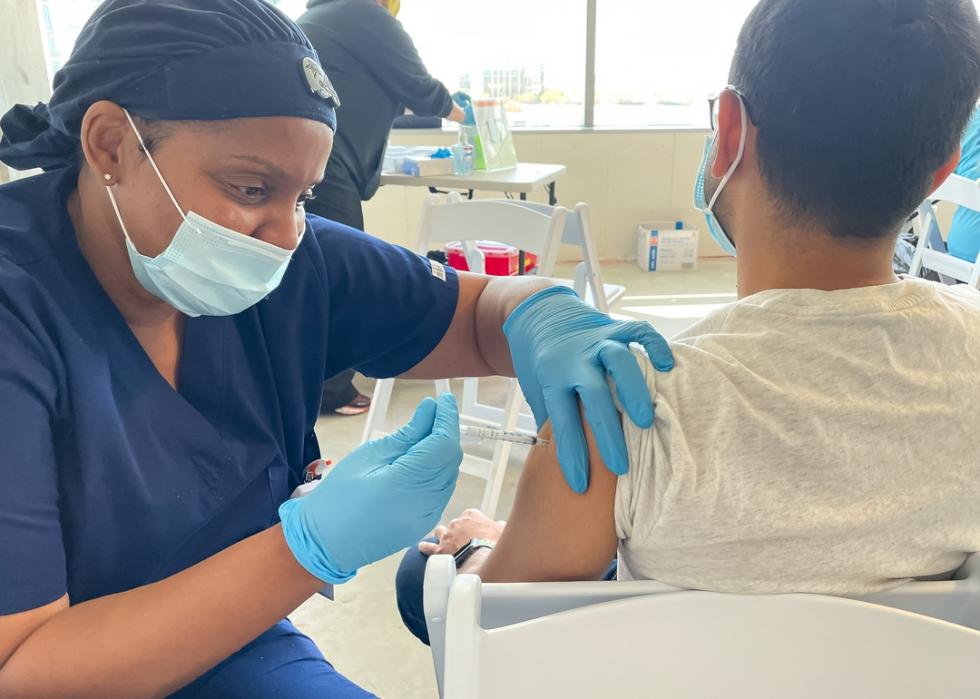
#6. Texas
- Projected shortage of registered nurses in 2030: 5.9%
--- 2030 projected demand for registered nurses: 269,300
--- 2030 projected supply of registered nurses: 253,400
- Projected shortage of licensed practical nurses in 2030: 29.3%
--- 2030 projected demand for licensed practical nurses: 114,400
--- 2030 projected supply of licensed practical nurses: 80,900
Texas is yet another state facing a shortage of nurses thanks to underequipped nursing programs that don’t have the resources necessary to accept all of their qualified applicants. In response to this issue, the UT Southwestern Medical Center partnered with the University of Texas at Arlington’s College of Nursing and Health Innovation in late 2020 to greatly expand its online nursing program, making it the largest public program of its type in the entire country. This single program has the potential to turn out thousands of LPNs and RNs, who could then close the gap.

#5. New Jersey
- Projected shortage of registered nurses in 2030: 11.2%
--- 2030 projected demand for registered nurses: 102,200
--- 2030 projected supply of registered nurses: 90,800
- Projected surplus of licensed practical nurses in 2030: 11.3%
--- 2030 projected demand for licensed practical nurses: 27,400
--- 2030 projected supply of licensed practical nurses: 30,500
One of the primary reasons for the projected nursing shortage in New Jersey is a lack of qualified educators who are able to train prospective nurses, resulting in thousands of potential students being turned away from programs each year. The New Jersey Nursing Initiative is working to fix the supply issue by investing millions of dollars in education, reshaping curricula, and helping potential educators pay for upper-level degrees. The organization and its mission could be a huge draw for nurses looking to leave the floor while remaining in the field or new nurses who may hope to teach someday.
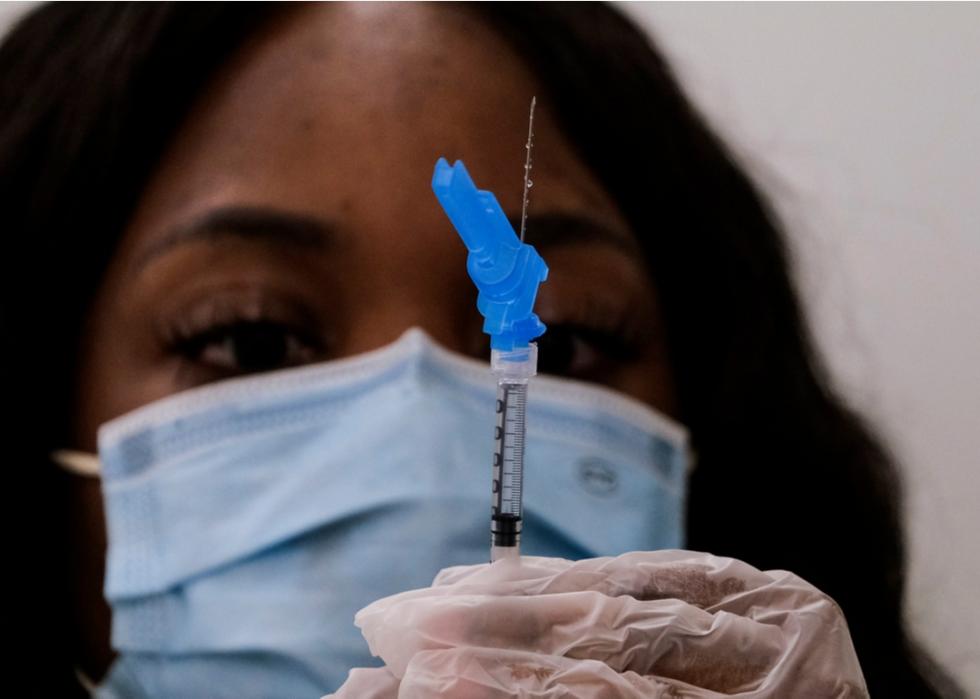
#4. California
- Projected shortage of registered nurses in 2030: 11.5%
--- 2030 projected demand for registered nurses: 387,900
--- 2030 projected supply of registered nurses: 343,400
- Projected surplus of licensed practical nurses in 2030: 3.1%
--- 2030 projected demand for licensed practical nurses: 117,400
--- 2030 projected supply of licensed practical nurses: 121,000
While it’s been a known fact for years that California will be at the center of the nursing shortage crisis come 2030, the COVID-19 pandemic has only accelerated the issue. At two separate points over the last year the state, namely the Los Angeles and San Francisco areas, has been the epicenter of the pandemic, and its 300,000 nurses have been stretched to their limits. The concern now is that many nurses, especially older ones, will retire early due to the stress and over concern for their own health and well-being, which will only make the projected 11.5% shortage happen before 2030.

#3. South Dakota
- Projected shortage of registered nurses in 2030: 14.0%
--- 2030 projected demand for registered nurses: 13,600
--- 2030 projected supply of registered nurses: 11,700
- Projected shortage of licensed practical nurses in 2030: 12.5%
--- 2030 projected demand for licensed practical nurses: 3,200
--- 2030 projected supply of licensed practical nurses: 2,800
In response to the projected shortage, South Dakota founded the SD Center for Nursing Workforce in 2002, which is tasked with recruiting, retaining, and educating licensed and soon-to-be-licensed nurses. Examples of recruitment tactics the state has undertaken are the South Dakota Recruitment Assistance Program (RAP), which provides $56,880 payments to nurses in return for three-year, full-time service commitments, and the South Dakota Rural Healthcare Facility Recruitment Assistance Program (RHFRAP), which provides an additional $10,000 payment to nurses who meet the same requirements.
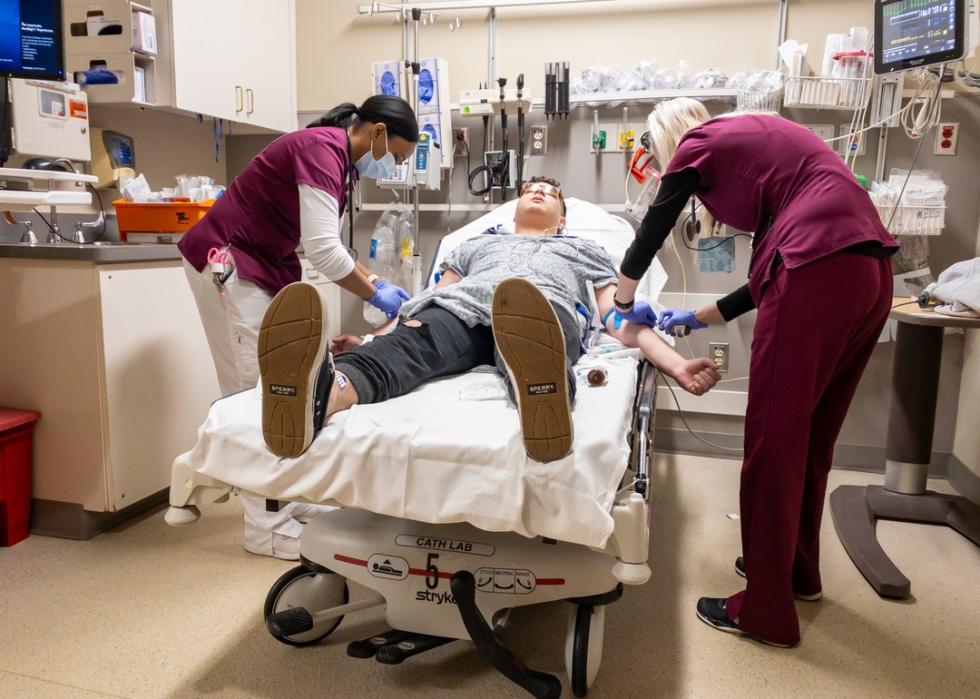
#2. South Carolina
- Projected shortage of registered nurses in 2030: 16.6%
--- 2030 projected demand for registered nurses: 62,500
--- 2030 projected supply of registered nurses: 52,100
- Projected shortage of licensed practical nurses in 2030: 36.4%
--- 2030 projected demand for licensed practical nurses: 12,900
--- 2030 projected supply of licensed practical nurses: 8,200
There’s at least one hospital group in South Carolina, Self Regional Healthcare, that has attempted to amend the crisis that the state is facing by guaranteeing jobs before students have even begun a program. Through their apprenticeship program, the hospital preemptively hires prospective CNA students, provides them with a scholarship to attend Piedmont Technical College, and pays them while they earn their degree. This arrangement may be especially appealing for established professionals who are looking to switch careers.

#1. Alaska
- Projected shortage of registered nurses in 2030: 22.7%
--- 2030 projected demand for registered nurses: 23,800
--- 2030 projected supply of registered nurses: 18,400
- Projected shortage of licensed practical nurses in 2030: 35.5%
--- 2030 projected demand for licensed practical nurses: 3,100
--- 2030 projected supply of licensed practical nurses: 2,000
Due to its separation from the contingent United States, Alaska has always had a hard time attracting and retaining highly skilled, and highly experienced nurses and medical professionals. The pandemic has only exacerbated the problem, leaving the northern tundra desperate for licensed nurses. On the other hand, those looking to provide medical care in the state are almost guaranteed job security, which can be a major draw for those looking to begin a long career.



